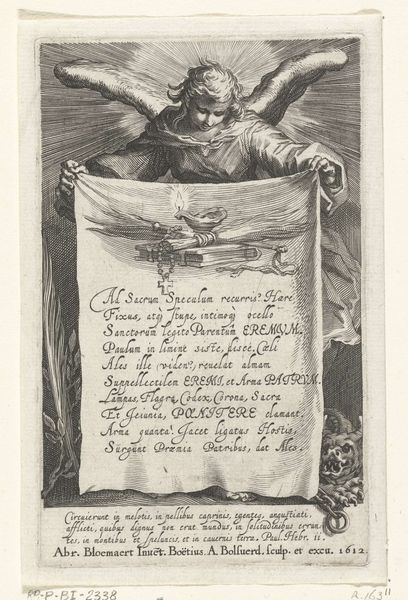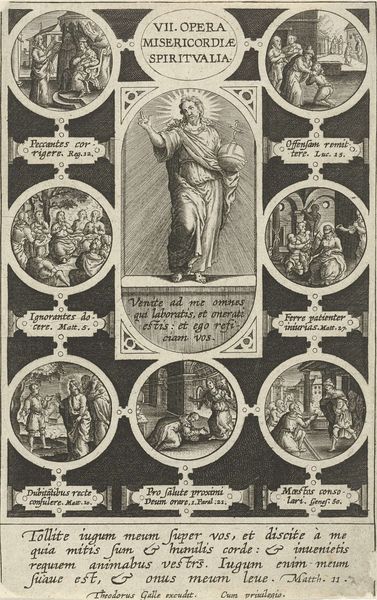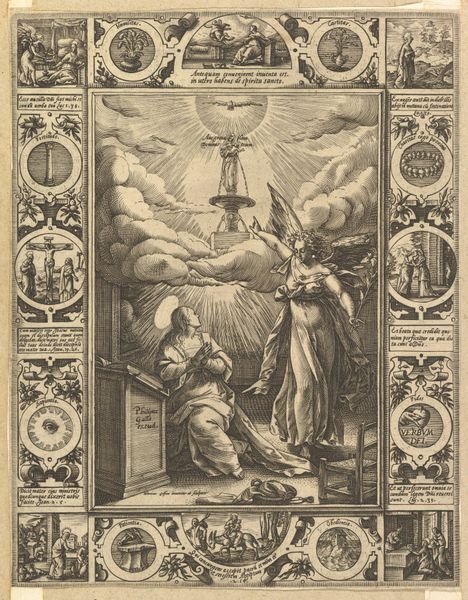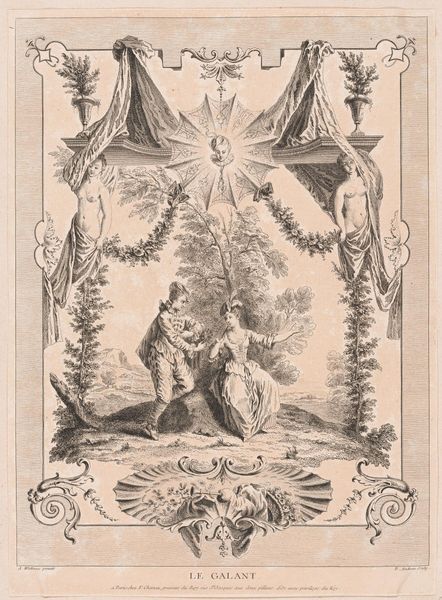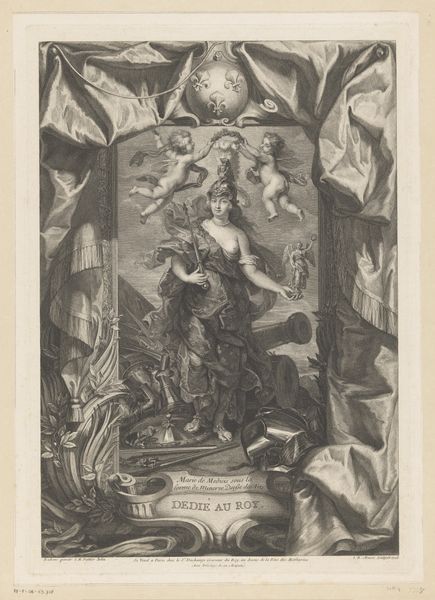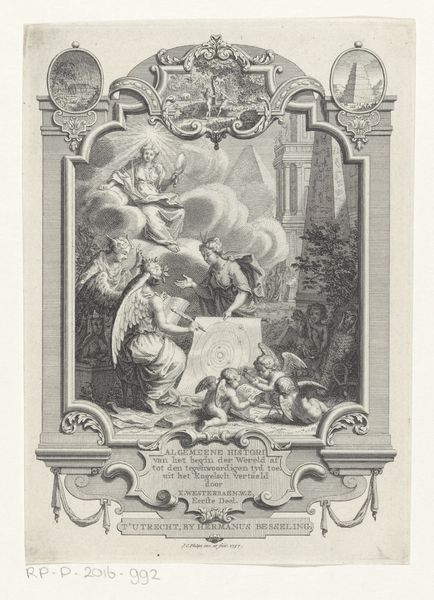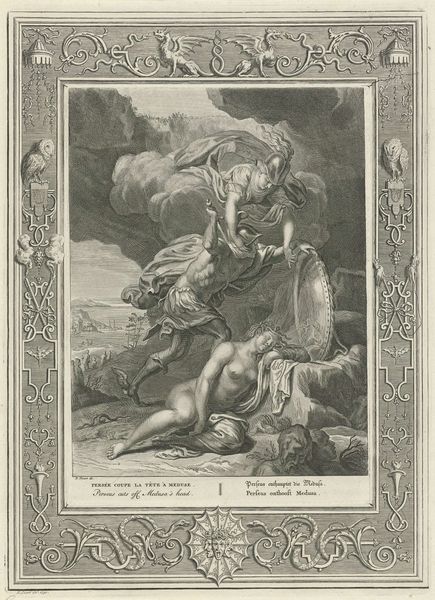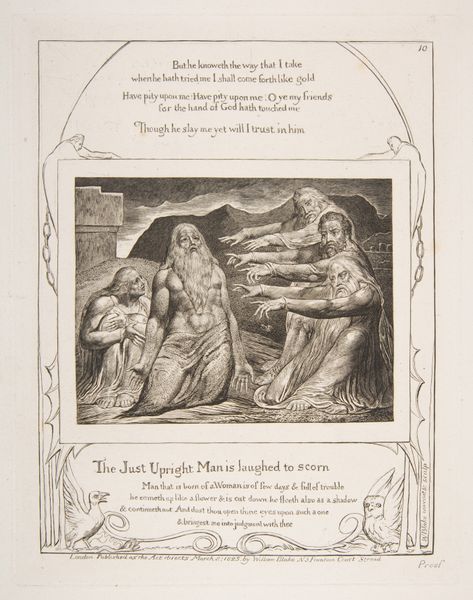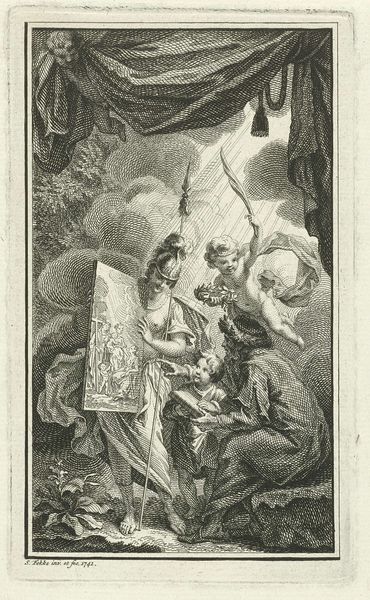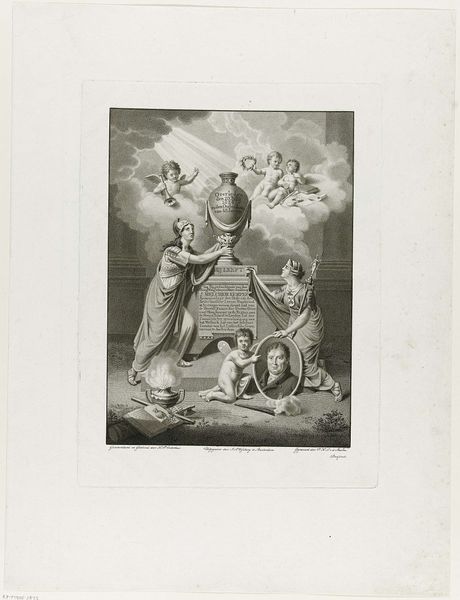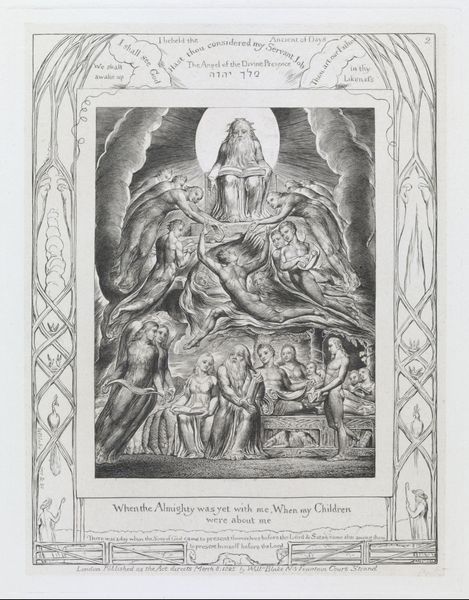
print, engraving
#
neoclacissism
#
allegory
# print
#
old engraving style
#
text
#
history-painting
#
engraving
#
historical font
Dimensions: height 394 mm, width 260 mm
Copyright: Rijks Museum: Open Domain
Curator: This print, possibly from 1795, is titled "De Rechten van den Mensch en van den Burger," or "The Rights of Man and of the Citizen." It’s a Neoclassical engraving by Lambertus Antonius Claessens. Editor: My immediate impression is one of…balance. The classical figures floating above, juxtaposed against the structured tablets below. It feels allegorical, yet very grounded. There’s a clear visual hierarchy at play. Curator: Precisely! It’s awash in allegory. Notice the figures: death and vanity on one side and what seems to be Minerva, goddess of wisdom, on the other. Central is a radiant female figure, potentially representing liberty or reason, connecting all through symbolism to these ideas about civil rights. The eye symbol may reference Enlightenment beliefs. Editor: I’m also struck by how the print renders the text itself. These are not mere words; they are structurally integral, enshrined like holy scripture in a format recalling Mosaic tablets. Semiotically, it elevates language to a foundational law, much like classicizing the art. Curator: And those texts are critical. It is presented to proclaim the fundamental and inalienable Rights of Man and of the Citizen during a revolutionary moment. The artist using potent cultural memory to connect revolution and timeless laws is a stroke of symbolic weight. Editor: The medium itself, engraving, lends this piece its character: that linear precision and crisp contrast that mirrors this sense of rational declaration and revolution—making explicit the break between regimes by invoking the ancient and moral codes. The font has a certain air that suggests legal proclamation. Curator: This is about instilling these ideals, giving them a kind of visual permanence within the consciousness of the people. You would place these works in their homes. This print served as an iconic statement. Editor: For me, I observe how Claessens managed to coalesce revolution and antiquity using simple composition and familiar language. I’m taken by its efficiency and historical grounding in the context of social order. Curator: Looking at this print makes you wonder about art's responsibility to define the moral fabric of a culture—then and now. Editor: And how the tangible object may speak on power’s ever-changing language as history evolves—one visual text after another.
Comments
No comments
Be the first to comment and join the conversation on the ultimate creative platform.
